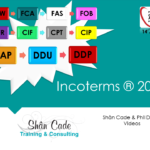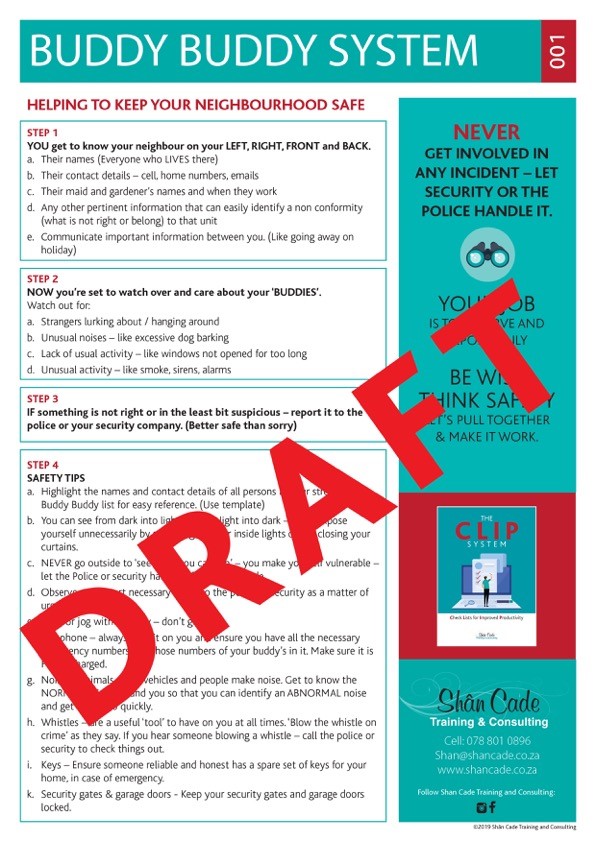“Managers must share their strategy with the team and let them know exactly what you expect from them. Encourage them to ask questions and challenge your thinking. Embrace their ideas. Then, keep on repeating yourself, again and again. You can never do it enough.” – Tony Manning
I have
managed people in a variety of workplaces for over 20 years and I have learnt
that effective management is all about managing 2 things:
- Yourself
- Your team
Seems simple right? Well, the truth is it’s far from it.
The hardest
part about being a manager is that it involves managing yourself and growing
yourself continually. The second hardest
part about being a manager is that it involves managing people, vastly
different people, with vastly different ideas of what they want to do and how
they want to be treated.
A manager’s
job, very simply, is to manage people and ensure they get their jobs done. How we do that and how we do that
effectively is a huge topic and one that keeps me busy every day.
Today, I want
to tell you about the
5 critical things people need to know if they are to be effective, and thereby if you are to be
effective as a manager.
They are
simple things that when well communicated will increase the effectiveness in
your workplace dramatically (and as a bonus reduce conflict.)
Successful
managers communicate these 5 critical things constantly.
- What to do: THE TASK
- Why do it: THE REASON
- How to do it: THE METHOD
- How well to do it: THE STANDARD
- How well it is being done: FEEDBACK
Let’s have a
look at each of these specifically…
- What to do: THE TASK
This item sits at number one of the list of items to be communicated, for
obvious reasons. If people do not know
what to do, they will not do it. No
matter how cross you get, how much discipline you dish out, or how much you
dock their pay. People will not do the job if they do not know what to do.
When telling people what to do, remember to make sure the person you are
telling to do the job, can carry out that function. Have the right person for the right job or
your frustration levels will be through the roof and your effectiveness will be
very low.
For people that carry out tasks regularly, you will not need to give too
many details on what is to be done. But for
those that are new, detail must be shared until the person can clearly feedback
to you what is required.
Never say “they know what to do, I don’t have to tell them” this is a
costly mistake that managers often make.
If each person carried out their work to the right standard, on time,
every time, not needing to be told what to do – there would be no need for
managers of any kind. The fact is,
people will always need managers, some more than others. If you have a person who can do their job,
well, on time, to the right standard, without much communication – give that
person a significant raise or promote them into a responsible position,
whatever you do, don’t let them go – they are far too rare and valuable.
Most managers under-communicate by 70%, don’t be caught doing the same.
Say things like “ Hey Joe, I know today is Friday, so I will be expecting
the weekly report on my desk by 10:00, is there anything you need clarity on,
or how can I help you get that task done on time?” or “Today I need you to make
sure the report is in by 15:00, do you have any questions on it” This gives the task that needs to be done but
also opens up the opportunity for any discussion to get clarity or overcome
concerns.
Once the instruction for the task has been given, we need to share with
the person the reason this task needs to be done. Why it is important that this task is done. It is important to communicate openly at this
step; share the reason the task must be done.
No. It is not acceptable to just
say “because it is part of your job” or “because I have told you to do it”. The reason gives the person doing the task value
in carrying out the task. Without knowing
the value in completing the task the chances of the task being completed on
time and completed to the right standard are virtually zero.
Share with the person the bigger picture of where their task fits in the
bigger system, of any people this task will affect if it is not done, of any
risks that the company may be exposed to if the task is not done, and of the
value, they are adding to the workplace by completing the task. Sharing this information does not have to be
time-consuming or long-winded, but it is crucial to improving the effectiveness
of the task being done.
Say “I need you to pack this shelf with these bottles of water in the
next 20 minutes, so that every customer that is coming in for their lunch break,
will have easy access to the cool water they need. This will increase our sales and make all of
our incentive targets easier to reach this month.” Remember to always be sincere and honest in
your remarks, never make things up – the truth always comes out.
Telling the person what they need to do (THE TASK) is good, telling the
person why they are doing the task (THE REASON) is better, but telling the
person how to do it (THE METHOD) is crucial to effectiveness.
Now, telling a person how to do a task, is dependent on a few
factors. You do not need to go into
detail for people who have been doing the task for several years and nothing
much has changed. You do not want to be
too descriptive with people in jobs where creativity is key, provide the
guidelines, but allow them to innovate and change the how if necessary.
For the most part simple instructions such as, “Please capture these
invoices by 14:00 using the Pastel system and send through to me via email when
you are done” give enough information on the method to be used. This takes for granted that the person
already knows how to use the Pastel system and the system has already been set
up with the right parameters for the information that must be captured.
You may need to communicate the how by sharing, who the person should
team up with, what research should be done, who they should chat with or learn
from, what programme needs to be used, or even what technique needs to be
applied.
Communicating THE METHOD well reduces time wasted and frustration in
doing the task.
- How well to do it: THE STANDARD
Most managers will score fairly well on giving people the task to do, moderately
on the reason and the method, but extremely poorly on the standard to which it
must be done. And yet, I will often hear
managers say, “look at this, look at what a poor job they have done, why can’t
they just do this right? They are such a weak employee” etc. Managers will say all these things, become
easily frustrated and blame the person, a lot faster than they will learn to
communicate the standard.
Remember one of the 2 things you need to manage to achieve effective
management is yourself. You need to grow
and find more, better ways to communicate the standard before you blame your
employee.
You can communicate the standard in a variety of ways:
- Share and explain the company
policies and best practice documents
- Practice following the policy and
best practice document guidelines yourself, people learn what you model
- Have a clear process and job flow
document and share them with the right employees. (These can even be done with
photos or pictures for illiterate employees)
- Show by doing – show the standard by
completing the task yourself, with the person
- Provide ongoing training on areas
that can be improved
- Provide regular feedback on the jobs
done
- Provide incentive/reasons for the job
to be completed a specific way
For most of my working life, I have been involved in the
hospitality industry. An industry that
requires very high standards, but for the most part employs less skilled and
often illiterate employees. This can
make reaching a standard a tough thing to do, especially since it has strict
timelines.
What I often used to do was create a ‘flip file’ for each
staff member on their job requirements and the standard they needed to achieve. So, for instance, a housekeeper would have
their file with them, when they opened it, there would be step by step
instructions with a photo of each step.
Making the bed would have each step, a photo for each step
and then crucially a final photo of what the bed needed to look like to reach
the right standard. They could compare
the photo to their bed and see if they reached the standard. I would be able to say if they reached the
standard or not easily because the photo set the standard. When I gave each employee their file, I would
take the time to do each of the tasks with them, so they were also taught the
right standard to achieve.
This can be used for all levels of employees, you can use
screenshots, instead of photos if their job is computer-based. Figure out how you are going to show the
staff what the standard is, not just expect it to be achieved with a bit of
luck.
Then actively thank or congratulate them on achieving the
standard OFTEN. You can never appreciate
too much (but again, make sure it is sincere).
- How well it is being done: FEEDBACK
The most forgotten of all the critical things to communicate. We often use the excuse of being too busy,
for not providing feedback. Waiting for
the annual reviews to take place, where our perception is biased by what
happened last week and not what has happened over the entire year.
Feedback is best delivered simply and on time. When a job is done well and on time, thank
the person sincerely and tell them you appreciate it. If the job is not done well or on time, don’t
wait until the last minute, step in as soon as you notice something isn’t going
according to plan or instructions. Ask
questions, provide information, LISTEN, LISTEN, LISTEN, discuss options, go
back to communicating the other 4 critical things. Handling “negative” feedback well and right
away, reduces conflict and frustration quickly and gives the chance for things to
still be done well and on time.
Often people get stuck and are too afraid to ask for help or seek clarity,
and by asking the question “You seem to not be making progress with this, how
can I help?” you free the person to communicate and then find what they need to
continue the task.
Give feedback – negative or positive – at the right times, do not
wait. When giving feedback be sure to
say things in the right way. It is
often not what we say, but how we say it that causes a great deal of unnecessary
damage.
In summary,
effective management requires you communicating these 5 critical things on an
ongoing basis. Don’t be afraid to
communicate as a manager, learn to do so well and continually.
Download our EFFECTIVE MANAGEMENT toolbox talk poster, for a great summary of what we have just shared.














